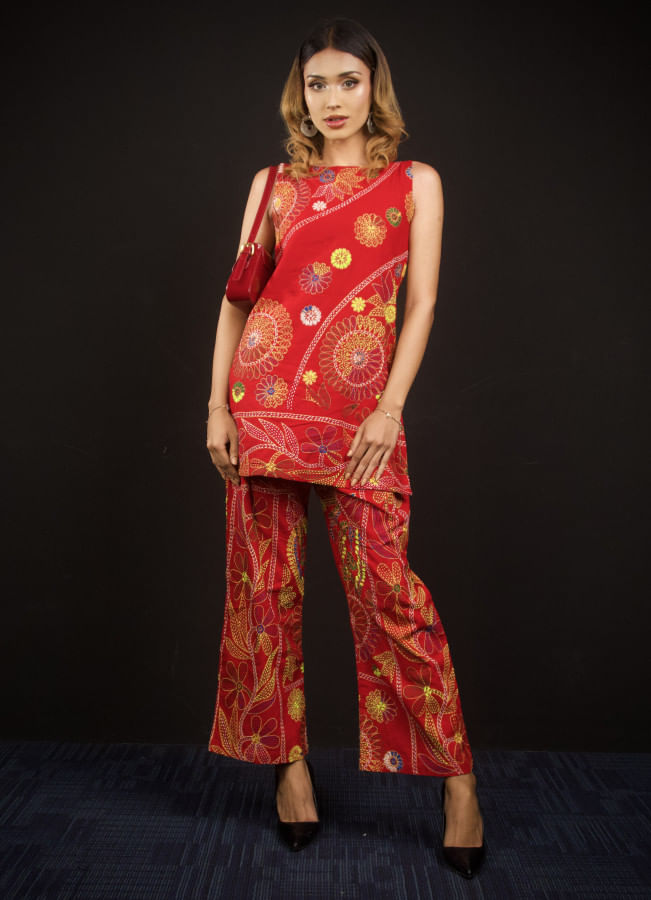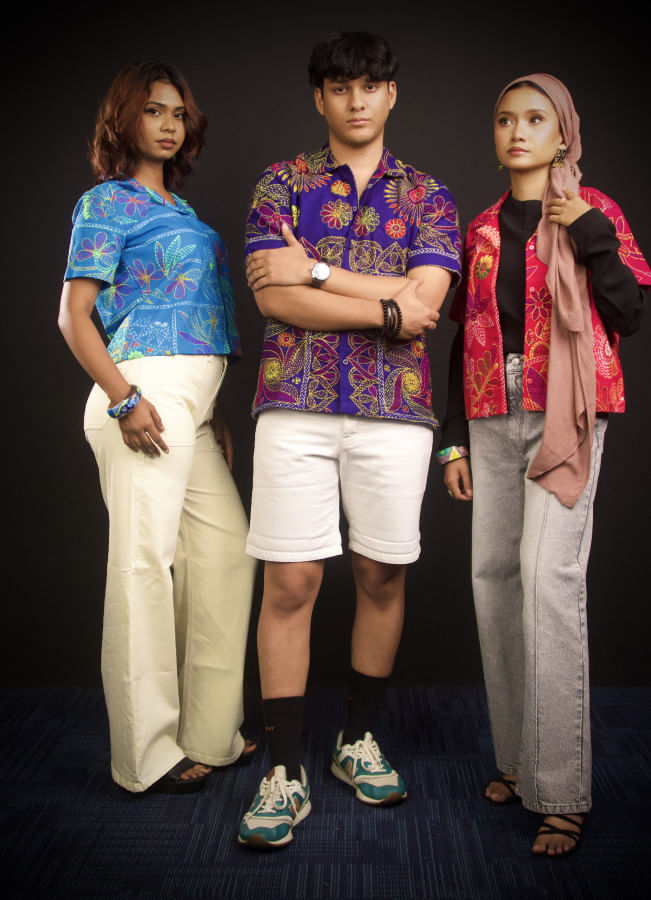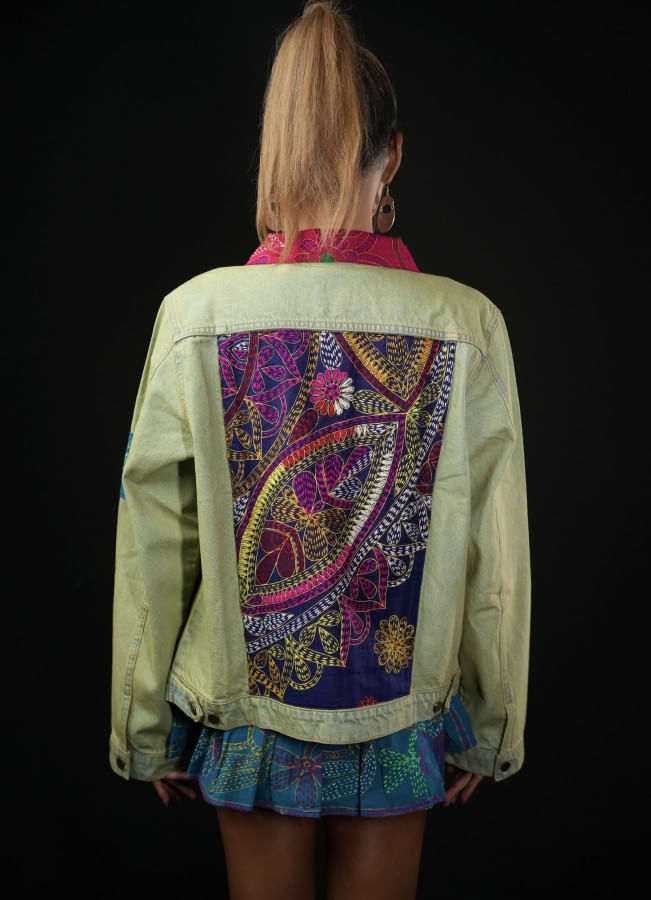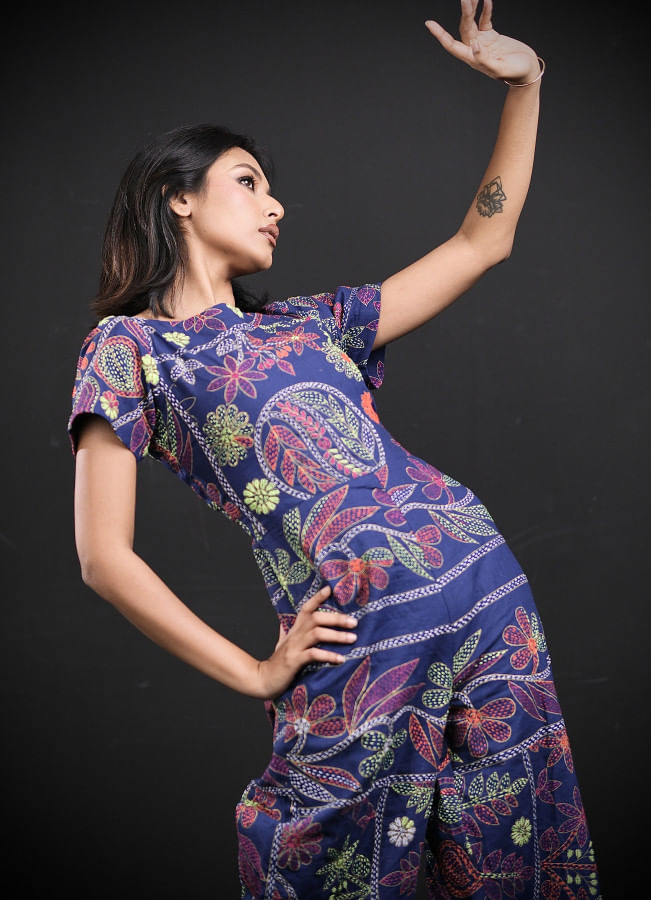How SIZ Is reviving Nakshi Kantha as the future of fashion

When Samaha Subah launched SIZ (short for Sarwar and Ismat Zaman, her parents), she was not trying to build just another fashion label. Subah was building a bridge between personal legacy and collective heritage, between the textures of tradition and the silhouettes of modernity.

"My mother introduced me to fabrics, textures, markets," she recalls. "And my father gave me the grit to create something of my own." SIZ is rooted in that dual inheritance. The result is a brand that speaks to both past and present, turning one of Bangladesh's most intimate craft forms, Nakshi Kantha, into contemporary fashion.
Why Nakshi Kantha?
To Subah, Nakshi Kantha is not just a textile; it's a narrative. "It's beautiful, intricate," she says, "but right now it's mostly limited to quilts. That risks turning it into a dying art." Her mission is to bring the kantha out of the home and onto the streets, into wardrobes, and ideally, into conversations.

It started with a jacket. Made from a repurposed kantha, it became one of her most-loved designs. Encouraged by the response, she expanded the idea into an entire collection. "The idea was to create garments that younger people would wear: clothes that carry cultural meaning, but also feel fresh, wearable, and modern."

Starting a business: Not a glamorous launch
Like many first-time founders, Subah's expectations did not align with reality. "I thought I'd sell out in a month," she admits. "I made three sales in the first month, seven in the next. It was a slow climb." But it taught her to let go of romanticism. "Starting a business is like chewing glass. There are so many factors you do not account for, like logistics, vendor issues, delays, floods, hartals!"
She sources all her materials locally and works with a network of about 50 women in Jamalpur, whose handcrafted Nakshi Kanthas become the foundation of her garments. However, working with local vendors also means navigating an ecosystem without formal contracts, where external factors, such as weather or transportation strikes, routinely disrupt timelines.

A realistic take on sustainability
SIZ is not marketed as a sustainable brand, and that's intentional.
"We are not there yet," Subah says plainly. "We are working towards sustainability, but there are still things we need to fix." She points to her packaging: one part made from recycled plastic, the other still conventional poly. "Once that stock is done, we plan to shift to jute or paper, but until then, I will not pretend we are fully sustainable."
What she does take pride in is her brand's upcycling initiative, The Reject Project.
"When I noticed scraps of Nakshi Kantha were going to waste, I started making bandanas and patchwork jackets. I have also used rejected garments and factory waste jeans, altering them or selling them at reduced prices."
This approach, she says, is less about visuals and more about respect for the artisan's labour, for the fabric's potential, and for the environment. It's about working with what's already there and finding value in the overlooked.

Walking the line between heritage and innovation
Balancing tradition with sustainability is not always a smooth path. Nakshi Kantha is rooted in memory, emotion, and slowness, whereas fashion often demands speed, scale, and trend. Subah sees potential in the tension.
Her strategy is to amplify traditional craft while making it relevant to younger, eco-conscious consumers both in Bangladesh and abroad.
"I want people to see that you can create fun, wearable designs without losing connection to heritage," she says. In doing so, she also hopes to expand economic opportunities for rural women and reframe how we think of Bangladeshi craftsmanship.
Not a brand of perfection, but of process
SIZ does not lean into glamour or curated gloss. It's a brand that embraces being a work-in-progress, and that's what makes it compelling. From patchwork jackets to flawed denim revived with Kantha embroidery, every piece reflects not just aesthetic thought, but intention.
What Subah is building is not just a fashion label. It's a soft resistance to the idea that tradition must be preserved in museums or marketed as luxury. Grounded in everyday wear, stitched with care, and unapologetically real, her garments live in a different space.
SIZ may be small, but it's asking big questions. What does it mean to honour heritage without freezing it in time? Can sustainability emerge from systems not originally built for it? Samaha Subah does not claim to have the perfect answers. However, with every stitch, every patch, every leftover scrap given new form, she's showing us that fashion, at its best, can be both reflective and radical. And in doing so, she is not just designing clothes, she is designing a conversation.
Photo: Mashrukur Rahman Khan

 For all latest news, follow The Daily Star's Google News channel.
For all latest news, follow The Daily Star's Google News channel. 








Comments